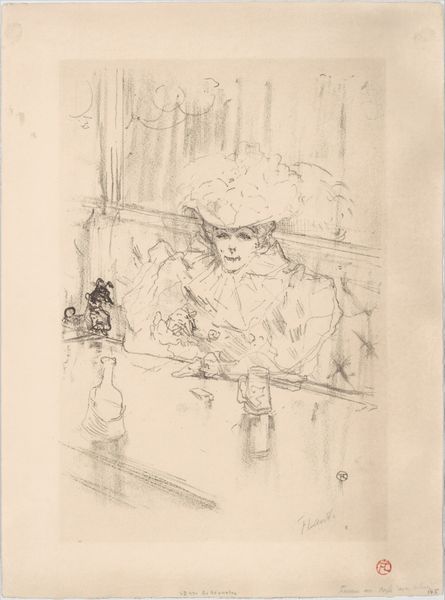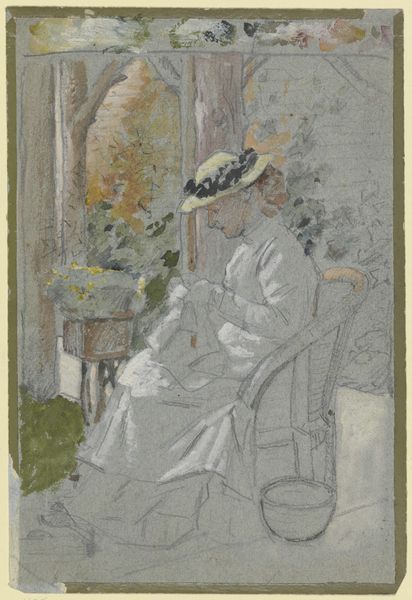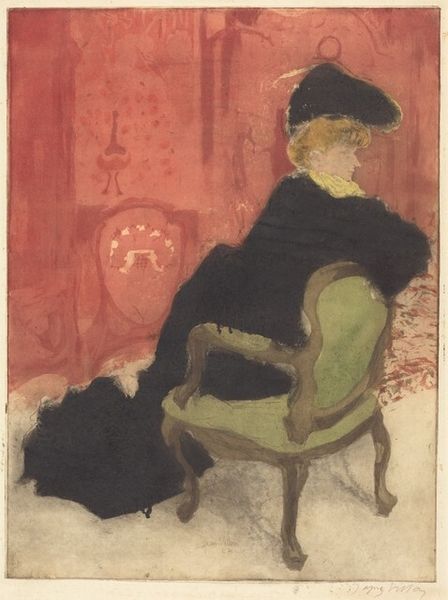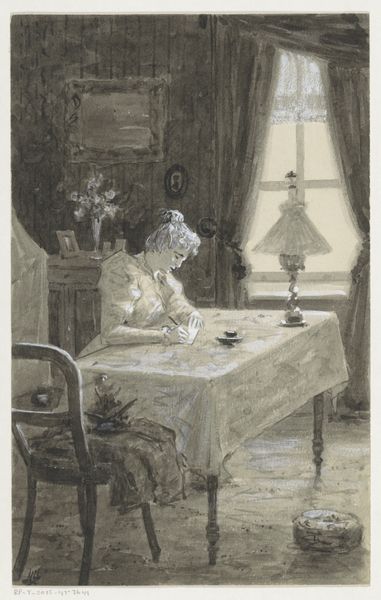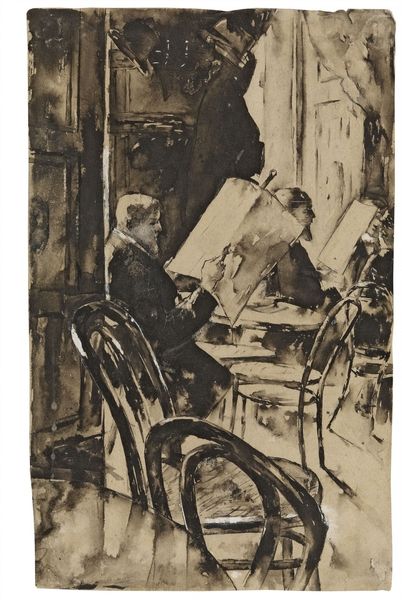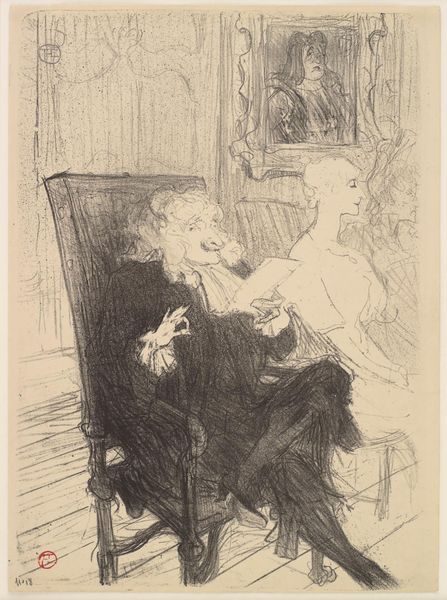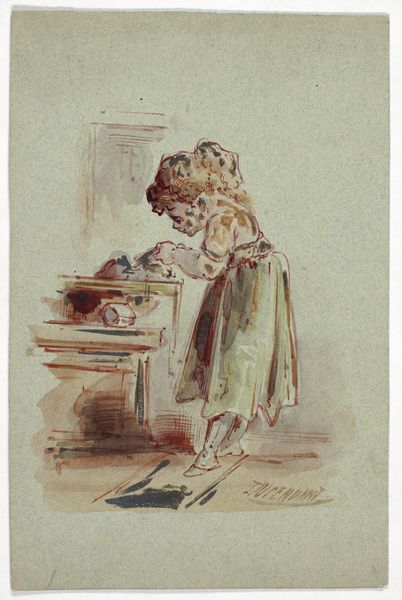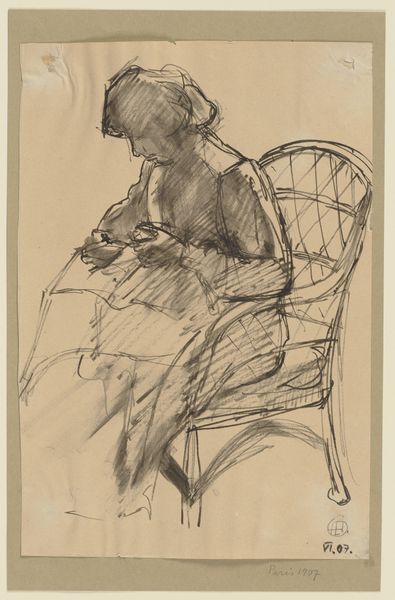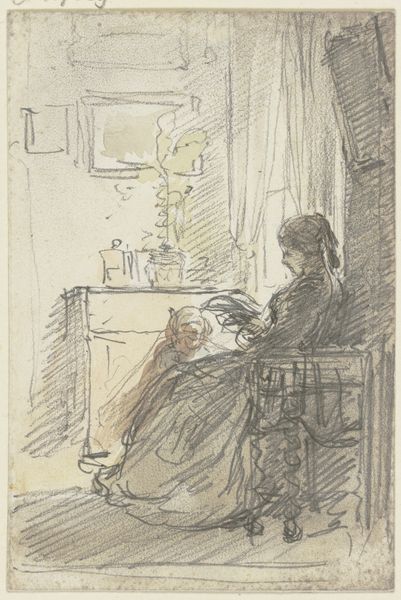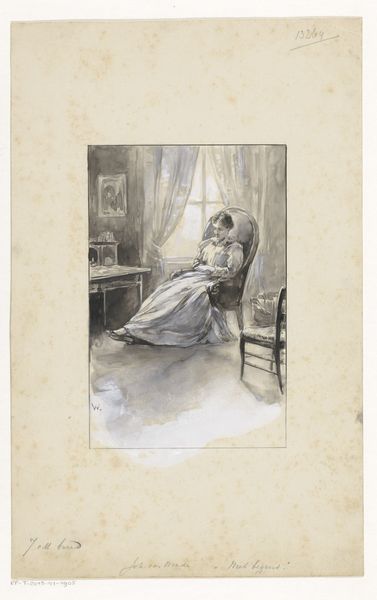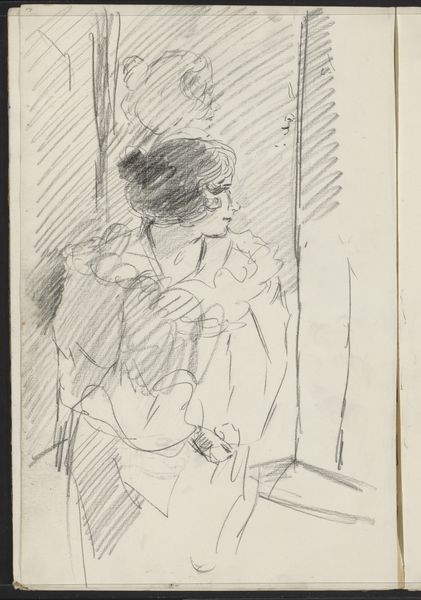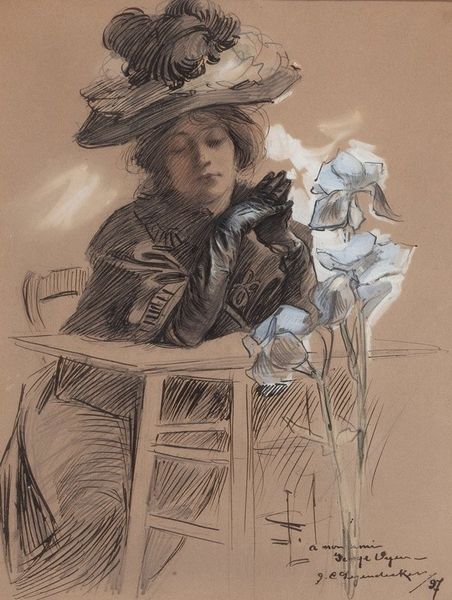
Dimensions: sheet: 12 x 9 3/8 in. (30.5 x 23.8 cm)
Copyright: Public Domain
Curator: Immediately, a sense of melancholy washes over me looking at this drawing. The muted palette and solitary figure… Editor: I find that interesting! Will Houghton’s "Portrait of a Woman Seated at a Table," believed to be created between 1891 and 1901, captures a quiet, perhaps introspective moment. What symbols or elements lead you to that feeling? Curator: The most immediate is her obscured face. While a full image of her appears in the mirror behind, the woman in the foreground hides her face from us in deep shadows, almost a kind of deliberate masking of identity. And then, of course, the flowers! A staple symbol, though in this context it reminds me of symbols associated with memorial images, specifically fragility and temporality. Editor: I see your point. It is printed on paper. The piece comes to us at a time when impressionism was giving way to other aesthetic approaches to representing women, both on stage and on the street. Intimism, too, sought a more direct, emotionally candid moment away from more classical modes. Would you agree? Curator: Yes! "Intimism" is the perfect term. But let's return to the mirror for a second. It reveals what she consciously presents to the world. But as you've mentioned, we have lost track of what is shown on stage and on the streets in Paris at the turn of the century. I believe the dichotomy tells us that the private and public faces might conflict! She reveals something and holds something back simultaneously. Editor: I think what is interesting here, in social terms, is the possibility of that intimate interior now available to a larger viewing public, particularly when one considers its current home here in the Metropolitan Museum of Art! Perhaps Houghton is anticipating a world where what's personal becomes widely known? Curator: Possibly. A fascinating insight given how much "personal" expression floods our society. Editor: Ultimately, this work makes me think about art’s function and position relative to changing notions of modern identity. Curator: Agreed. It also encourages deeper thinking about the human face itself!
Comments
No comments
Be the first to comment and join the conversation on the ultimate creative platform.
